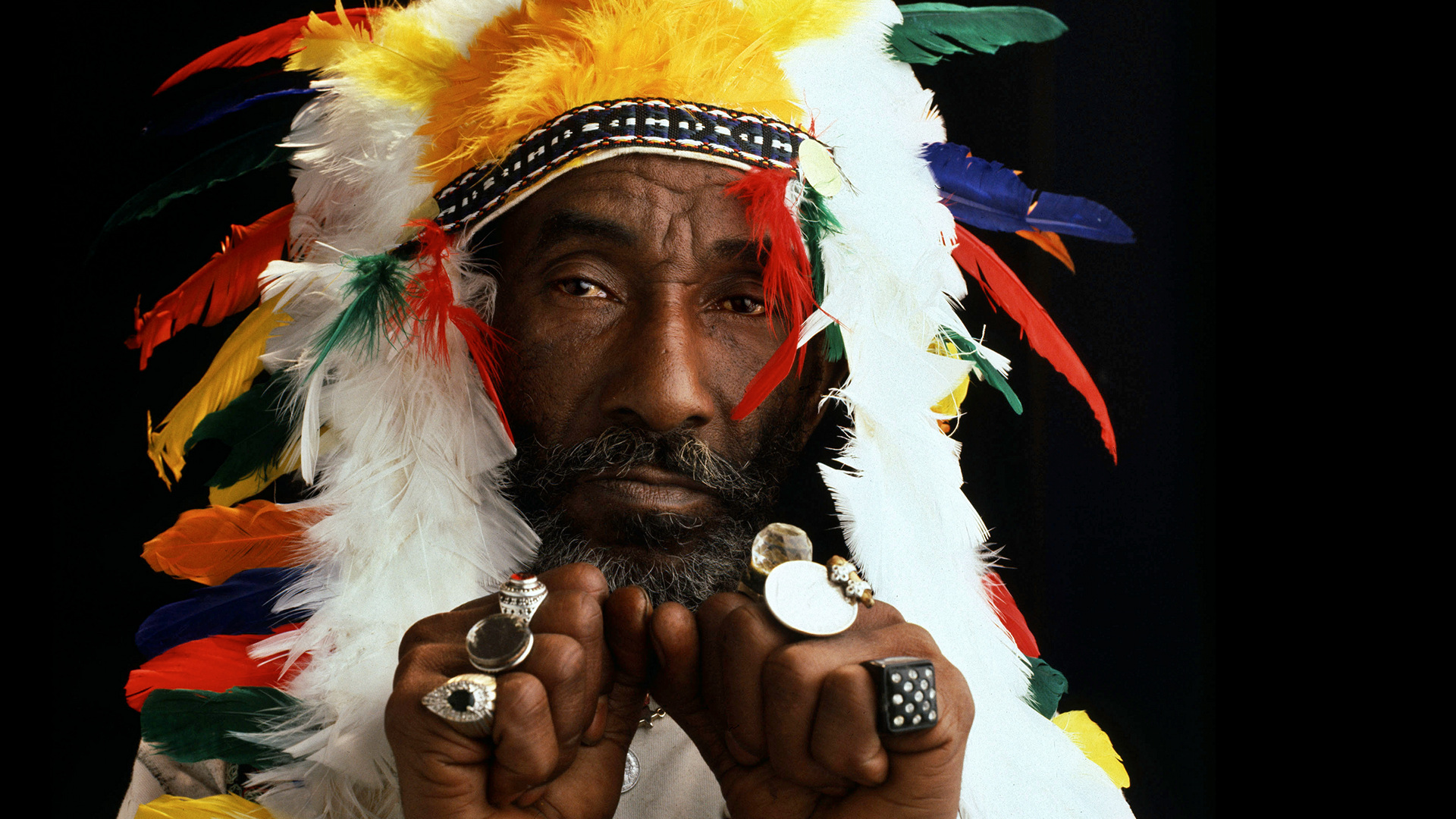05.03.17
The Village Underground
Reggae is certainly one of my favourite genres of music to see performed live. It would be very hard indeed to find a ‘reggae lover’ who hasn’t heard of Lee ‘Scratch’ Perry (a.k.a The Upsetter). Having been an active musician since the 50’s, Lee ‘Scratch’ Perry has been at the forefront of musical innovation, noted as being an ‘inventor’ in dub music having created new studio recording and production techniques. Needless to say being able to see Lee Perry, simply in the flesh, was a thrilling experience.
The Village Underground tucked away in east London, is a wonderfully renovated underground space, with red brick walls, large arches, and high ceilings, the venue was cool aesthetically and a fantastic for capturing the sound.
The packed support for the evening was: Reggae Roast, MC Brother Culture, Resonators and Kioko. I arrived during the final battling of MC Brother Culture with the Resonators certainly setting the scene for a night of real roots reggae.
The audience was what I’d have expected; a larger number of older people, ready to re-live ‘the good old days’ (Lee ‘Scratch’ Perry himself was born in 1936 and is now 80!), plus many younger people of all ages and fashions. One thing I believe everyone had in common was the idea that this concert was for many, a ‘bucket-lister’, and probably a one-and-only chance to see such a prominent character in music history.
The final support act came to the stage ten members strong, with a standard reggae set-up complete with a brass section. I immediately liked their energy, the “vibe” seemed fitting to pump up an audience for such an event. Opening their act with almost ‘chant’ like lyrics;
“Listen to the music that makes you feel free, Sing it back to me….KIOKO”. Starting with a huge amount of ‘audience participation’ (perhaps too much for my personal liking) their songs were certainly energetic, catchy and woke up the audience. The lead singers voice reminded me of one of my favourite bands ‘The Skints’ vocals; and perhaps for that reason I warmed to the band. They smoothly jammed through 45 minutes certainly building the excitement and feeding the buzz for ‘the legend that is Lee ‘Scratch’ Perry’.
Having worked with some of the biggest names in Reggae history such including: ‘Bob Marley and the Wailers, Junior Murvin, the Congos, Max Romeo, Adrian Sherwood, the Beastie Boys, Ari Up, and many others’…This ideology that Lee Perry is a ‘Legend’ was not only fit, but was clearly a respected title, as every musician on stage that evening that spoke of the man as ‘the legend’.
Finally around 10pm the, also world renowned, band ‘The Upsetters’ came to the stage, they then proceeded to play an instrumental piece before asking the audience if we were ready for “The Legend himself….LEE ‘SCRATCH’ PERRY”.
I honestly have to say, I was filled with joy as Lee Perry came to the stage and the band jumped straight into a set filled with classics. The man himself brought enough joy for the evening with simply his bodacious outfit that reminded me some what of a magpie. At 80 years old, Lee Perry was dressed in an orange suit, with matching orange beard and hair, a hat bedazzled with gems, whilst adorning all manor of exotic jewels and sparkles.
On the microphone, Lee Perry rarely sung the lyrics to any of the songs throughout the evening and instead seemed to freestyle reggae talk over the tunes rhyming about anything and everything. For nearly the whole rendition of ‘Iron Shirt’ Lee Perry was singing about his ‘ginger wine’ that near to the end of the song was found by a stage tech and handed to Lee Perry, who then moved on to sing about something it appeared he had found on the floor.
Although unorthodox, I felt that it in no way damaged the evening. Looking around, the general reception of the performance seemed happy, with people frequently sharing laughs and generally enjoying the atmosphere.
I was reminded of the old saying “The older you get, the less you care” and thinking of how empowering the performance was. I also found myself thinking that had the concert been advertised as ‘The Upsetters with Lee ‘Scratch’ Perry improvising lyrics throughout’…I’d still have brought a ticket.
The Upsetters played flawlessly, a seriously professional polished set that was executed perfectly. I felt that the whole evening exceeded expectations. The fact Lee ‘Scratch’ Perry hardly sung one whole line of his lyrics that we all know so well, but instead spoke completely random off the cuff rhymes; created what felt like a more profound, intimate and certainly original experience.

